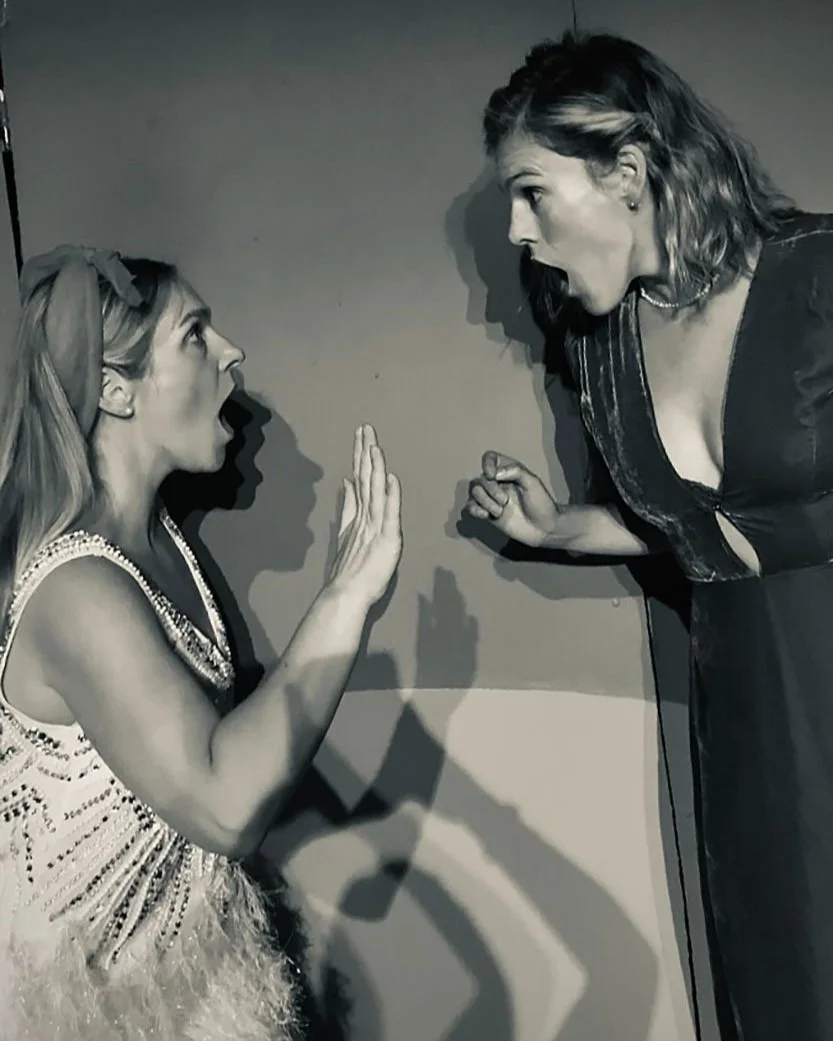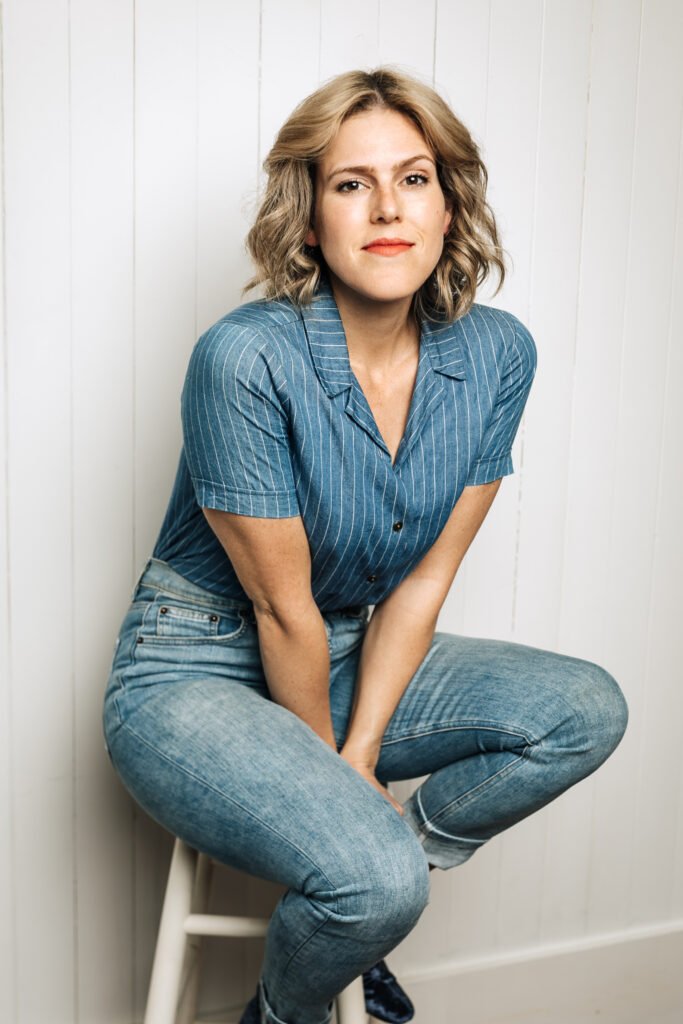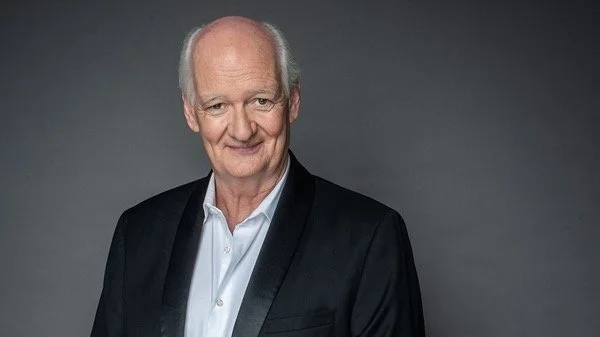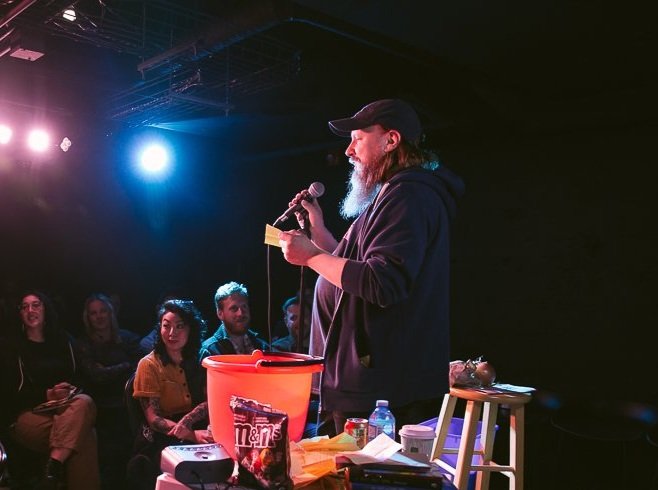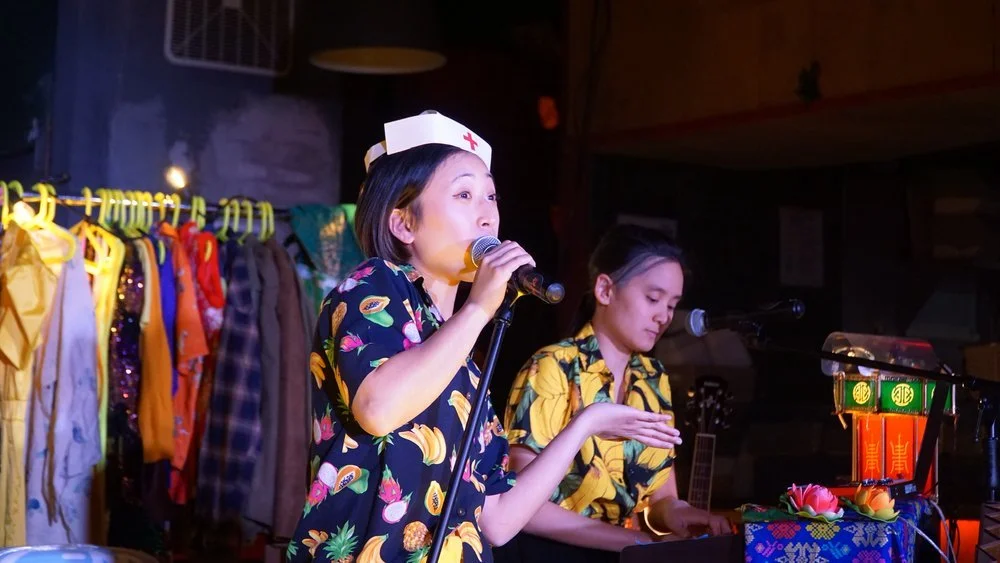Agatha Christie-style mystery meets spontaneous laughs in Stage Fright: Murder at the Improv
The Improv Centre features an array of new talent for its 1950s-set thriller-comedy
Stage Fright: Murder at the Improv incorporates a mix of short-form improv games.
Stage Fright: Murder at the Improv plays at the Improv Centre until October 29, Fridays and Saturdays at 7:30 pm.
AGATHA CHRISTIE’S WHODUNNIT play The Mousetrap has inspired its share of other creative works that could best be described in today’s parlance as “meta”. Tom Stoppard’s 1968 play The Real Inspector Hound, for instance, concerns itself with a pair of theatre critics who find themselves entangled in deadly real-life shenanigans while reviewing a Mousetrap-esque production.
More recently, the 2022 film See How They Run is about the mysterious murder of a sleazy American filmmaker who had been in negotiations to direct a movie version of The Mousetrap. It is surely no coincidence that the detective assigned to the case is named Inspector Stoppard.
See How They Run in turn inspired artistic director Jalen Saip to create the Improv Centre’s newest show, Stage Fright: Murder at the Improv. Well, sort of. During a telephone interview, Saip admits that she hasn’t actually watched the movie, which stars Sam Rockwell and Saoirse Ronan.
“I have yet to see it, because I have almost no time,” she says. “But I saw the trailer, and that murder mystery takes place in a theatre; it kind of reminded me of Noises Off in terms of being sort of a peek behind the curtain. And I thought, ‘Well, a murder in a theatre–that seems very doable in our theatre.’”
Like See How They Run, Stage Fright takes place in the early 1950s. It’s 1951, to be precise, and the Emerald Playhouse is about to open its biggest show of the season. The lead actor, however, has been murdered, a fact that might put a damper on things. It’s up to a rotating cast of the Improv Centre’s finest improvisers to get to the bottom of it—with a little assistance from an audience volunteer.
“We were thinking of what we could do as a Halloween programming option, and I really love the idea of incorporating an audience member in our show,” Jaip says. “With the help of Allen Morrison, who has been a long-standing performer here, we devised this murder mystery that incorporates some of our short-form improv games in the first half. And then the murder happens, and for the second half of the show we are going to have an audience member participate and help us solve the mystery.”
Improv Centre artistic director Jalen Saip.
Saip admits that there is a certain degree of risk involved in pulling an unproven non-performer up on-stage to interact with the pros, especially in the context of a production in which the improvisation is expected to make the audience laugh while simultaneously driving a narrative forward.
“You can’t really ensure that it won’t be chaos,” she notes. “Before the pandemic we had done some shows where we also used an audience member as our lead—like the Merry Kiss-mas show that was done here—and you really, truly never know what you’re going to get with an audience member. But that’s sometimes the fun of it. That’s how you can really show that you are improvising the story. You don’t know what they’re going to say or do.”
Fortunately, the type of person who would be keen on taking the stage to improvise in front of a paying audience doesn’t tend to be shy or reticent. Volunteering is one thing; making the cut as a member of the Improv Centre’s regular ensemble is quite another. The long-running local arts organization recently held its first-ever open call for new members, and received more than 200 submissions. After an extensive round of auditions, a dozen performers—Alan Pavlakovic, Alex Gullason, Camille Legg, Cari Leslie, Daniel Chai, Dan Willows, Helen Camisa, Holly Collis Handford, Maggie Onedo, Mary Saunders, Matthew Ip Shaw, and Riley Hardwick—have been welcomed into the ranks.
Saip says that they, and all top-notch improvisers, share certain standout qualities.
“I think it’s quite obvious when there’s a confidence in improv and I think that comes from knowing that whatever happens it’s going to be fine if you just collaborate,” she says. “If you just build the story one brick at a time, you’re building this together and it doesn’t have to be, ‘Oh, that wasn’t my idea and now I’m kind of panicking and I don’t know how to respond.’ It’s really just that willingness to kind of go with the flow and just say yes to what’s happening and to make it the most honest response to where the narrative goes.”


